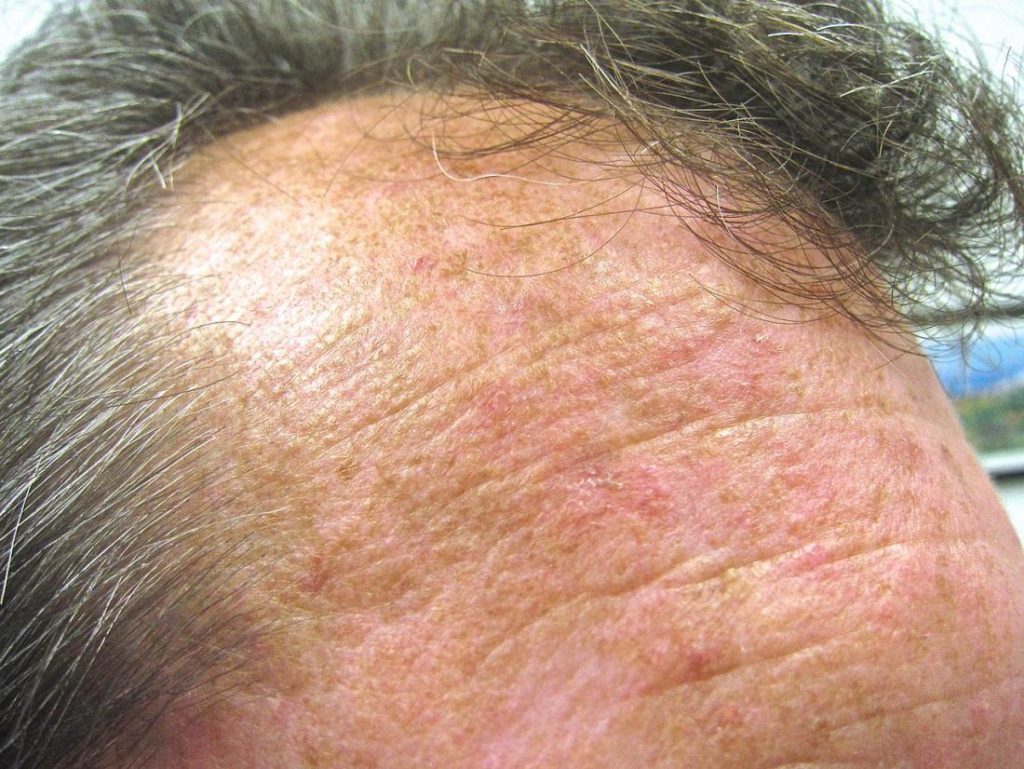
Diagnosed with Cancer? Your two greatest challenges are understanding cancer and understanding possible side effects from chemo and radiation. Knowledge is Power!
Learn about conventional, complementary, and integrative therapies.
Dealing with treatment side effects? Learn about evidence-based therapies to alleviate your symptoms.
Click the orange button to the right to learn more.
- You are here:
- Home »
- Blog »
- side effects ID and prevention »
- Actinic Keratosis- Photodynamic Therapy
Actinic Keratosis- Photodynamic Therapy

“Subsequent meta-analyses showed that daytime Photodynamic Therapy was associated with a significantly reduced maximal pain score and a lower risk of adverse events as compared with cPDT”
I am a long term survivor of a blood cancer. I’ve had an autologous stem cell transplant and therefore have an increased risk of skin cancer. I also spent too much time suntanning as a youth. I burned frequently.
As a result I worry about any and all skin issues. Even actinic keratosis. A form of pre-skin cancer. I supplement with a number of nutritional supplements shown to reduce my risk of skin cancer. However, even AKs worry me a bit.
As a cancer survivor who lives with long-term and late stage side effects, I cannot bring myself to undergo therapies shown to has serious side effects. Therefore I am comparing the two types of photodynamic therapy-
- conventional and
- daytime
As the studies linked and excerpted below explain, AK’s are common. Further, daytime photodynamic therapy affords less pain with almost equal efficacy fewer adverse effects.
Do you have skin lesions of any kind? Actinic keratosis? Scroll down the page, post a question or comment and I will reply to you ASAP.
Thanks,
David Emerson
- Cancer Survivor
- Cancer Coach
- Director PeopleBeatingCancer
Daylight versus conventional photodynamic therapy for the treatment of actinic keratosis: A meta-analysis of randomized controlled trials
“Daylight photodynamic therapy (dPDT) is suggested to be effective for actinic keratosis (AK). We performed a meta-analysis of randomized controlled trials (RCTs) to compare the efficacy and safety of dPDT versus conventional photodynamic therapy (cPDT) in patients with AK.
Relevant studies were identified through a systematic search of PubMed, Embase, and the Cochrane Library. A fixed or random effect model was applied, depending on the heterogeneity. Six RCTs with 369 patients with 5,556 AK lesions that were undergoing dPDT or cPDT with red light and methyl aminolevulinate (MAL) were included.
Overall, the incidence of complete response (CR) was not significantly different between the two groups (risk ratio [RR]: 0.93, p = 0.07). Subgroup analyses indicated that dPDT was non-inferior to cPDT for CR in studies only included grade III AK lesions (RR: 0.97, p = 0.41), but less effective for CR in studies which also included grade III lesions (RR = 0.87, p < 0.001).
Subsequent meta-analyses showed that dPDT was associated with a significantly reduced maximal pain score (mean difference = -4.51, p < 0.001) and a lower risk of adverse events (RR = 0.70, p < 0.001) as compared with cPDT.
These results suggested although dPDT was better tolerated, the treatment efficacy of dPDT is non-inferior to cPDT with red light and MAL only in grade III AK lesions. The relative therapeutic efficacy of dPDT in AK of grade III lesions in comparison with cPDT should be further evaluated.”
Actinic Keratoses: Field Cancerization and Photodynamic Therapy
“Actinic keratoses (AKs) are one of the most frequently encountered skin lesions in clinical practice.1,2AKs are precancerous, focal, sun-induced areas of abnormal proliferation of atypical keratinocytes confined to the lower layer of the epidermis.1,2
Often referred to as solar keratoses, these lesions commonly occur in areas with chronic and cumulative sun exposure such as the face, ears, neck, dorsal forearms, hands, and scalp.1,2 The highest incidence of AK is seen in middle-aged to elderly men with chronic and sustained ultraviolet (UV) radiation exposure over their lifetimes.
AKs are more prevalent in fair-skinned individuals and those categorized as Fitzpatrick skin types I and II (Table 1)3; the Fitzpatrick phototype scale is a numerical classification used to estimate the response of different types of skin to UV light.3″


